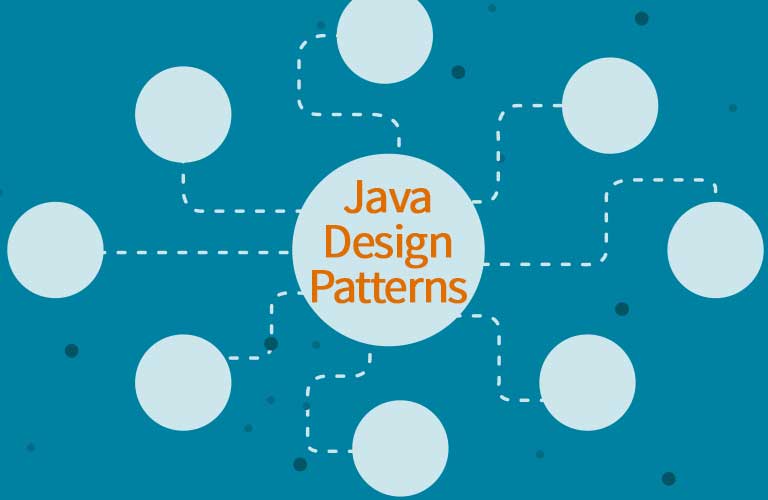Table Of Content

Observer, State, and Strategy are often implemented with abstract classes. An abstract class is one whose main purpose is to define a common interface for its subclasses. An abstract class will defer some or all of its implementation to operations defined in subclasses; hence an abstract class cannot be instantiated. A concrete class may override an operation defined by its parent class. Overriding gives subclasses a chance to handle requests instead of their parent classes.
Behavior Design Patterns
Decorator pattern dynamically adds/overrides behaviour in an existing method of an object. The functionality of an object is modified at runtime.We can see this pattern being a fundamental piece on frameworks such as Angular or NestJS. The next example shows how to add extra logging when creating a new class. Ensure a class has only one instance, and provide a global point of access to it. A good usage for this pattern is for example when creating a database connection; we want to ensure that connection is not created multiple times but the same instance reused multiple times.
Abstract factory/factory method
In this example, the Context class holds the strategy to use and can change the strategy at runtime. The AdditionStrategy and SubtractionStrategy classes are concrete strategies that implement different algorithms. The executeStrategy method uses the strategy to calculate the result.
Implementation
This code creates an instance of the Animal class using the AnimalFactory class and then calls the speak method on the Animal object. An object packages both data and the procedures that operate on that data. An object performs an operation when it receives a request from a client.
Erich Gamma: A pattern of success ZDNET - ZDNet
Erich Gamma: A pattern of success ZDNET.
Posted: Tue, 18 Jul 2006 07:00:00 GMT [source]
The Chain of Responsibility pattern is related to the Chaining Pattern which is frequently used in JavaScript. The following example demonstrates the money dispense for an ATM where multiple amounts are resolved through a chain of requests. Accesses the elements of an object sequentially without exposing its underlying representation. A trivial example below shows an Iterator class that provides methods to move through an array of elements.
Any object can be replaced at run-time by another as long as it has the same type. We say that a type is a subtype of another if its interface contains the interface of its supertype. Gangs of Four design patterns lay the foundation of core design patterns in programming. There are many other design patterns built on top of these patterns for specific requirements. Groups of the fundamental design patterns used in programming are built on four patterns. On top of these design patterns, numerous others are constructed for various requirements.
Designing for Change
Lets you traverse elements of a collection without exposing the underlying representation of the collection. The pattern defines an iterator interface that includes methods for accessing and manipulating elements of the collection. In this example, we have a Shape interface and a Circle implementation of the Shape interface. The ShapeFactory maintains a pool of Circle objects and reuses them whenever a Circle object of a certain color is requested.
Code fragments that illustrate how you might implement the pattern in C++ or Smalltalk. DEV Community — A constructive and inclusive social network for software developers. If you're not a C++ programmer, don't be worried that most of thecode examples are in C++. They don't use obscure areas of thelanguage, and the code examples should be easily readable to anyonewho has used a C based language.
Command
There are 5 design patterns in the creational design patterns category. The GoF design patterns list eleven behavioral design patterns. Like other implementations, we don't know what algorithm is used to sort the objects. It removes the need to use a separate class as you'd do with implementations of Template Method in languages that don't have functions as first-class citizens. Strategies are known as classes that implement multiple algorithms but expose the same interface. You could have numerous sorting methods (merge sort, bubble sort, quick sort) all implemented in separate classes but with the same interface (a single method that takes an array, for instance).

As we've seen, many of the patterns are still here with us, in the standard library, shared third-party libraries, and frameworks. Using functions we remove the need to have classes for every algorithm when it would just be a method in the class anyway. If you never try to access them, you won't pay for the cost of loading them, and that's the advantage of using a proxy. You don't have to have that object directly available to you all the time. You can apply these lazy load techniques to produce more efficient code and use fewer resources.
In this example, the Visitor interface declares a visit operation for each concrete element. The Element interface defines the accept method, which takes a visitor as an argument. The ConcreteElementA and ConcreteElementB classes implement the Element interface and define the accept method, which calls the visit method of the visitor and passes itself as an argument. The ConcreteVisitor1 class implements the Visitor interface and provides the implementation for the visit methods, which perform operations on elements. There are 7 structural design patterns defined in the Gangs of Four design patterns book. The Gangs of Four design patterns book lists 7 structural design patterns.

An object can have many types, and objects of different classes can have the same type. Like the Decorator example above, the lack of inheritance also forces proxies to only be available for interface or function types. Design patterns are a fundamental aspect of software design and development. They are reusable solutions to common problems that arise in software design and provide a way for developers to write more maintainable, flexible, and scalable code.
Most behavioral design patterns are specifically concerned with communication between objects. Parameterized types give us a third way (in addition to class inheritance and object composition) to compose behavior in object-oriented systems. Many designs can be implemented using any of these three techniques. Patterns allow designers to create more flexible, elegant, and ultimately reusable designs without having to rediscover the design solutions themselves. Since its release in 1994, the Design Patterns book continues to be a seminal work in building software. The book created a new shared vocabulary and named these repeated solutions we see all over different codebases.
So much so there have been multiple other books on design patterns, documenting even more examples. You can quickly explain that your solution is an Adapter for anyone who has read about it without detailing what an Adapter is. This pattern separates the construction of a complex object from its representation. The most common motivation for using Builder is to simplify client code that creates these complex objects.
Authorization, feature flipping, rate limiting, and all without changing the commands that handle the requests and in any order you'd like. As the HTTPMiddleware implementors have complete control over if the request continues or not, you can add functionality (almost like decorators) and decide if the request flow continues or not. Proxies are an interface to some other object that might be expensive to create or interact with directly. A typical case for using proxies is in ORM tools when loading an association. You don't necessarily need to load the posts for the user every time you're loading a user so that ORM tools will hide the Posts behind a proxy object.
The strategy pattern describes how to implement interchangeable families of algorithms. The state pattern represent each state of an entity as an object. Object oriented design methodologies favor many different approaches.

No comments:
Post a Comment